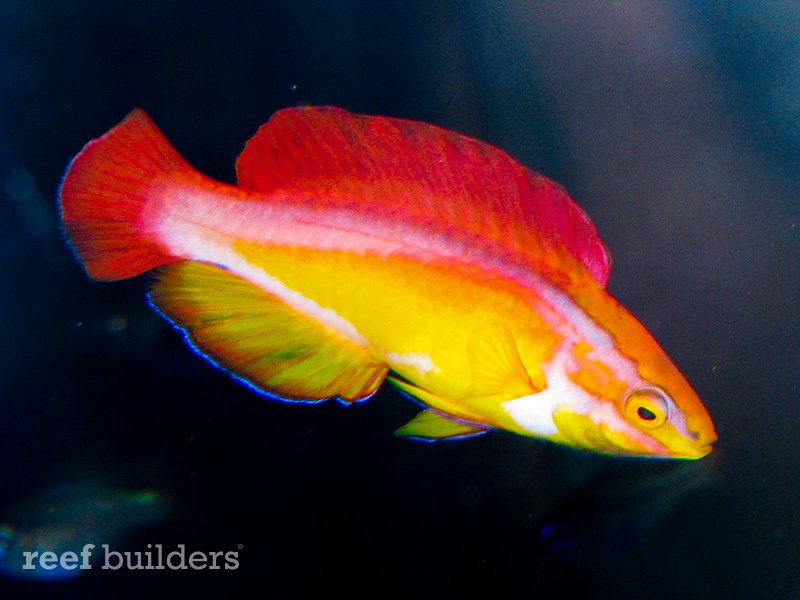It’s no secret that male reef fish usually have much brighter colors and in some cases gaudy coloration compared to their female counterparts. This feature of sexual dichromatism is particularly pronounced in wrasses, anthias and to lesser degree in the gobies, dragonets and pygmy angelfish. The most widely believed explanation was based mostly on sexual selection: brighter colors should make it easier to find a mate. However new research by Grether and Anderson published in the latest issue of Proceedings of the Royal Society B: Biological Sciences invokes competition between males of different species as another likely influence. The authors of the study worked with damselflies of closely related species and their findings indicated that where species overlap, the coloration of sexually active males was more differentiated between species than in areas where the species do not co-occur. The purpose behind this ecological observation is to prevent fighting and competition between males of species who have no need to fight since they are not competing for the same mates. It is plausible to conclude that similar mechanisms are at play in males of reef fish species, as the famed naturalist Konrad Lorenz first did as far back as 1962. For more information on this story visit the more focused writeup on PhysOrg. Pictured above is a displaying male flame wrasse, Cirrhilabrus jordani.
Brighter colors of male reef fish are now closer to being understood by new research

Jake Adams
Jake Adams has been an avid marine aquarist since the mid 90s and has worked in the retail side of the marine aquarium trade for more than ten years. He has a bachelor’s degree in Marine Science and has been the managing editor of ReefBuilders.com since 2008. Jake is interested in every facet of the marine aquarium hobby from the concepts to the technology, rare fish to exotic corals, and his interests are well documented through a very prolific career of speaking to reef clubs and marine aquarium events, and writing articles for aquarium publications across the globe. His primary interest is in corals which Jake pursues in the aquarium hobby as well as diving the coral reefs of the world.
Share This



